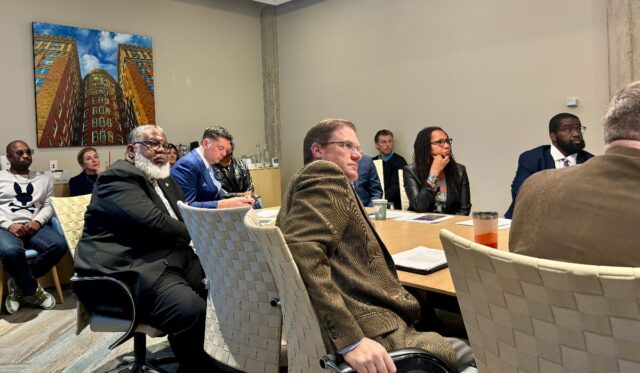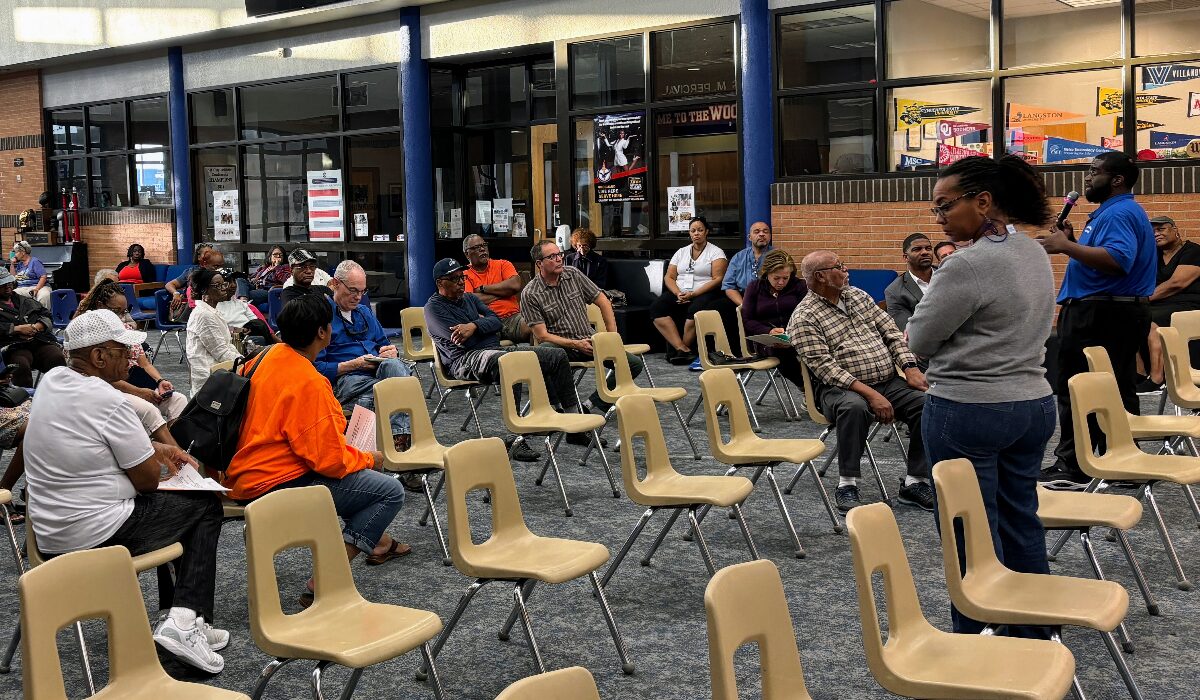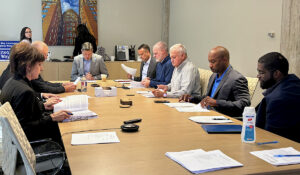
To limit the impact on Millwood Public Schools, an Oklahoma City review committee approved a revised tax increment finance district expansion today, bumping the proposal forward in support of a major development that includes a USA Volleyball-affiliated complex.
Two weeks after concerns from Millwood representatives delayed a vote on the issue, the Northeast Renaissance Increment District Review Committee advanced a seven-year TIF district expansion instead of the 25-year version originally proposed.
During Friday’s 45-minute meeting, committee members unanimously approved two agenda items related to the newly-proposed TIF agreement. The first item recommended the amended Northeast Renaissance Redevelopment Project Plan, and the second recommended allocating the property tax revenue of the designated plot of land for the project plan — “Increment D” — which includes a hard court and sand court volleyball complex, a pickleball center and multiple retail spaces. Details about a proposed hotel in the project are unclear.
If eventually approved by the OKC City Council, the proposed TIF amendment would expand the Northeast Renaissance Redevelopment Project, a TIF intended to increase economic activity in the OKC Adventure District.
The first draft of the TIF amendment would have diverted $11 million of increased property tax from the designated plot over 25 years: $8 million toward retail/commercial development, $1.5 million to public improvements and development, and $1.5 million to “other public developments.” The revised proposal only budgets $2 million of allocated property tax, allowing $1.5 million to go toward the development and the remaining funds to go toward other capital improvements.
MPS Superintendent Cecilia Robinson-Woods said the compromised TIF agreement is a “win-win” for both the development and the predominantly Black school district, which has a limited property tax base. In Oklahoma, school districts leverage property taxes to fund bond packages for building, transportation and technology projects.
“It also takes into account the needs of the district, which (…) are really unique,” Woods said. “[We are] a small school district with a ton of [public] property, nonprofits, that just don’t contribute to the overall valuation of the district, which obviously is imperative for a school district’s survival. I think it’s a good, happy medium for everybody.”
RELATED
Northeast OKC project hits snag as Millwood Public Schools worried by proposed TIF by Sasha Ndisabiye
The district review committee held a special meeting Oct. 17 to vote on the original TIF proposal for the “Increment D” construction plot within Millwood Public Schools at the southeast corner of Martin Luther King Boulevard and Northeast 63rd Street. The committee took no action on the Oct. 17 agenda items after hearing concerns from Millwood Public School representatives, who objected to taxes being diverted away from the school district and into the project. The delay allowed the Millwood community to gather Oct. 25 and discuss the impact of a TIF that would have redirected millions in property tax revenue for more than two decades.
Following the last meeting, Robinson-Woods said she met with Alliance for Economic Development CEO Kenton Tsoodle, project developer Andy Burnett, review committee member John Pettis Jr., and Millwood Board President Rickey Hunt to try and find a solution all parties could agree on.
Ultimately, the length of the TIF proposal was dropped from 25 years to seven years.
“We’ve created a very short-term TIF district, really the shortest in the city’s history, to be seven years,” Tsoodle said. “What that means is, for seven years, any property taxes that are generated new above what’s there now would go into the TIF fund, and then we’re able to use that to incentivize this project or do other public improvements. And then at the end of seven years, whatever’s been generated when the TIF ends, all of those new taxes then flow into where they normally would flow: the school district, the county, city, health, Metro Tech, the library system.”
Review committee addresses Millwood concerns

Following the Oct. 17 district review committee meeting, Millwood representatives met with community members to discuss what the TIF allocation would mean for the community. Many of the residents were concerned about a rise in their property values and taxes — a concern that was also brought up during Friday’s meeting.
Multiple Millwood residents said they are concerned the development project could increase their property values, thus increasing their property taxes and pricing them out of the district. Tsoodle said he understands the concerns, but he said the TIF would not change their property tax rate.
“I certainly understand those concerns,” Tsoodle said. “I think some of it is property tax law and statutes and things are very confusing and very hard to understand. And really the part that’s hard is the TIF does not directly increase taxes. The TIF only talks about how the taxes that are generated are spent. That’s really all the TIF does. It does not change your tax rates. It does not grow your taxes. It does not shrink your taxes.”
Oklahoma City Councilwoman Nikki Nice — who has been elected to represent Senate District 48 and will be sworn into the Oklahoma Legislature in November — said although she and other Millwood residents still have some concerns, she believes the seven-year TIF is a good compromise.
“I still am concerned about the transparency of it,” Nice said. “I think we still are not and have not been accountable to our residents in relation to what this is, how it’s supposed to work, and even (…) the time and the expectations for them. And that’s something that I’ve been talking with some of the other folks about — with the city — that we need to have [another] meeting so the neighbors understand, and they can ask those questions, and it can be presented in a better way.”
Burnett, the project developer, said his intent is to be a “good neighbor” and make sure all of the involved parties have a seat at the table.
“We met that entire group on the site in January of ’24 — 11 months ago, on the site — to talk about all of this,” Burnett said. “(Former) Councilman Pettis, Councilwoman Nice, we met all of them there because we wanted them to be a part of the conversation of the design, of the quality. We’ve pursued their involvement, and we will continue to pursue their involvement. We want them to be excited about what we’re doing.”
Tsoodle said he is happy to see a compromise that benefits the project and the school district. He said the approval from the district review committee is the first step to a much longer process.
“The City Council is who makes the ultimate decision,” Tsoodle said. “There’s multiple public meetings that happen. I believe at least four different bodies, public bodies, have to approve these sorts of changes. (…) Today is only step one. It’s got to go through the Planning Commission. It’s got to go through economic development. It’s got to go through City Council. So, residents have plenty of opportunity to come to those public meetings and share thoughts, opposition, support — whatever their stances are.”
Read the full Northeast Renaissance Redevelopment Project plan























